RSC主编推荐:纳米领域精彩文章快览(免费阅读原文)
英国皇家化学会(RSC)是一个超过175年历史的面向全球化学家的非营利会员制机构,旗下拥有44种期刊,其中很多在化学领域有很高影响力。为了进一步帮助广大读者追踪科技前沿热点,X-MOL团队与英国皇家化学会合作,推出英国皇家化学会期刊主编推荐的精彩文章快览,本期文章属“纳米领域”,英文点评来自英国皇家化学会期刊的主编。如果大家对我们的解读有更多的补充和点评,欢迎在文末写评论发表您的高见!
Chemical Science (IF: 9.556)
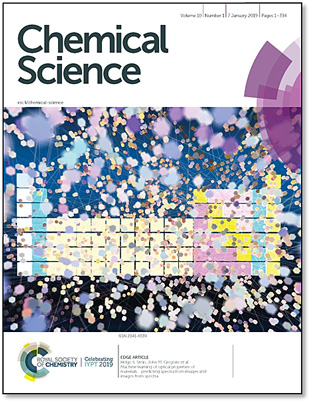
1. Poly(ethylene glycol) nanocomposites of sub-nanometer metal oxide clusters for dynamic semi-solid proton conductive electrolytes
Chem. Sci., 2019, Advance Article
DOI: 10.1039/C9SC02779C
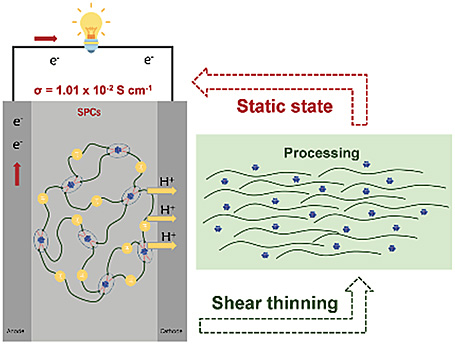
Researchers from the South China University of Technology have obtained semi-solid nanocomposites by dispersing metal oxide clusters in the melt of polyethylene glycol (PEG). They show promising proton conductivities due to the fast proton transportation through the dynamic polymer chains. The nanocomposites also show pseudo-plastic properties: the nanocomposites behave like solids with negligible flow at high concentrations, but at high-speed shear forces the viscosity of the composites decreases and they can flow. The study could be useful in the design of other semi-solid proton conductors.
Open Access(可免费阅读原文)
扫描或长按二维码,识别后直达原文页面,或点此查看原文

2. Ultra-Permeable Polyamide Membranes Harvested by Covalent Organic Framework Nanofiber Scaffolds: A Two-in-One Strategy
Chem. Sci., 2019, Advance Article
DOI: 10.1039/C9SC03088C
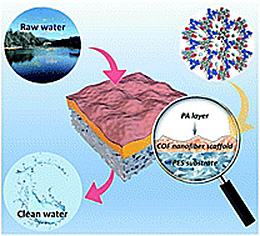
Scientists from Nanjing Tech University have prepared ultra-permeable nanofiltration membranes with a water permeance of up to 31.1 L m-2 h-1 bar-1 and a Na2SO4 rejection rate of about 95%. Most nanofiltration membranes are quite thick and have a high transport resistance, but the highly porous and hydrophilic carbon organic framework (COF) nanofiber scaffolds used in this study can create ultrathin polyamide layers with large surface areas. This membrane has potential to be used in delivering clean water across the globe, which is a major issue.
Open Access(可免费阅读原文)
扫描或长按二维码,识别后直达原文页面,或点此查看原文

Nanoscale Horizons (IF: 9.095)
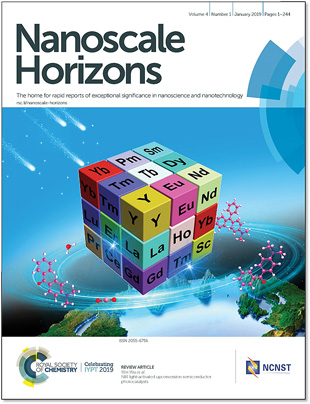
1. Understanding the noble metal modifying effect on In2O3 nanowires: highly sensitive and selective gas sensors for potential early screening of multiple diseases
Nanoscale Horiz., 2019, Advance Article
DOI: 10.1039/C9NH00404A
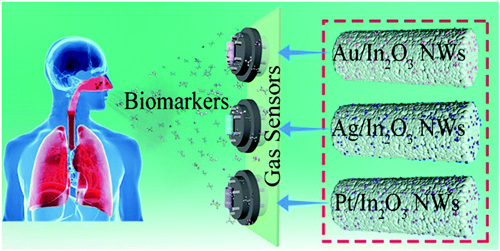
Detection of multiple volatile organic compounds in human exhaled breath has the potential to help with the early diagnosis of diseases. However, detecting trace levels of exhaled biomarkers remains a challenge and the corresponding mechanism for the selectivity is still unclear. Herein, ultrafine In2O3 nanowires (NWs) modified with Au, Ag, and Pt noble metal nanoparticles (NMNPs) are synthesized using the electrospinning method and are used to build semiconductor sensors. It is exciting to observe that the introduction of NMNPs enhances the sensing performance, but also effectively tunes the selectivity. The Au-, Ag- and Pt-modified In2O3 NW sensors show excellent selectivity to hydrogen sulfide, formaldehyde, and acetone biomarkers, respectively. To understand the mechanism of the selectivity, theoretical simulation is performed and it is found that the specific absorption energies between the modified NWs and the target gases along with the “spillover effect” work together to give the selectivity properties. The work provides a simple, low-cost, effective tool for early screening of halitosis, breast cancer, and diabetes at the same time and an in-depth understanding of the enhanced sensing performance.
限时免费阅读原文,登录后可下载
扫描或长按二维码,识别后直达原文页面,或点此查看原文

2. Incorporating mixed cations in quasi-2D perovskites for high-performance and flexible photodetectors
Nanoscale Horiz., 2019, Advance Article
DOI: 10.1039/C9NH00391F
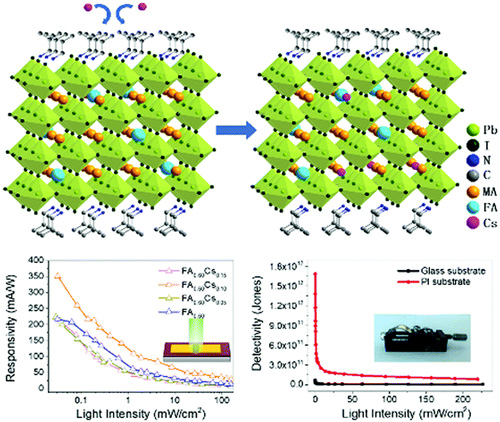
The intrinsic instability of 3D perovskites against moisture restricts their use for practical applications in optoelectronics devices. Great efforts have been devoted to developing quasi-2D perovskites due to their much better stability, but their device performance is still poor compared to their 3D counterparts due to inefficient charge transport. In this paper, for the first time, an exceptionally simple synthetic method is developed to incorporate a unique combination of formamidinium (FA) and cesium (Cs) mixed cations with well-controlled composition into (iBA)2(MA)3Pb4I13 (iBA = iso-butylamine and MA = methylamine) to achieve quasi-2D perovskite films with remarkably enhanced film quality. This optimized mixed cation incorporation can not only improve the charge transport among the inorganic metal halide layers, but also enable excellent operational stability and performance enhancement in photodetection, especially for flexible photodetectors with high responsivities, short response times and good mechanical robustness. Overall, incorporating these exclusive mixed cations provides valuable design guidelines and new insights into stable perovskite materials for high-performance flexible photodetectors.
限时免费阅读原文,登录后可下载
扫描或长按二维码,识别后直达原文页面,或点此查看原文

3. A silk-based sealant with tough adhesion for instant hemostasis of bleeding tissues
Nanoscale Horiz., 2019, Advance Article
DOI: 10.1039/C9NH00317G
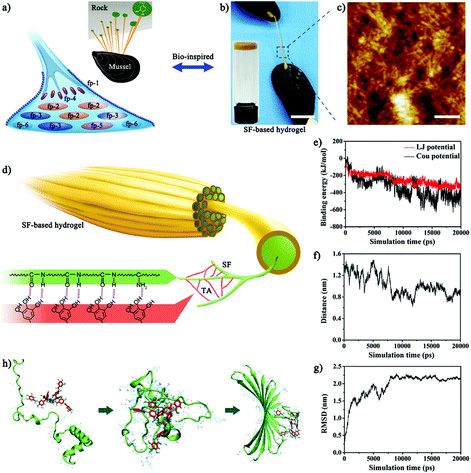
Adhesion to wet tissue surfaces, especially in highly dynamic biological environments, is important in clinical fields but remains extremely challenging. Currently available sealants are cytotoxic, adhere weakly to tissues, or cannot be used in wet and dynamic environments within the body. To address these challenges, marine mussels, which secrete catechol-rich foot proteins to maintain strong adhesion under seawater, provide an ideal model for researchers to design high-performance adhesive systems. However, the existing biomimetic technologies focus on imitating the catechol feature of the mussel foot proteins, while the importance of their hierarchically assembled nanostructures for robust underwater adhesion is neglected. We envisioned that simultaneously mimicking the chemical composition and hierarchically assembled nanostructures is a promising strategy to enhance the wet adhesion properties of bio-inspired materials. Here, we reported a facile method for developing strong underwater sealants with hierarchically assembled nanostructures by introducing tannic acid into silk fibroin to address the aforementioned limitations. The co-assembly behavior of tannic acid with the natural biomolecules can open up a new avenue for the one-step development of functional nanoscale materials and hierarchical bio-assemblies.
限时免费阅读原文,登录后可下载
扫描或长按二维码,识别后直达原文页面,或点此查看原文

如果篇首注明了授权来源,任何转载需获得来源方的许可!如果篇首未特别注明出处,本文版权属于 X-MOL ( x-mol.com ), 未经许可,谢绝转载!































 京公网安备 11010802027423号
京公网安备 11010802027423号